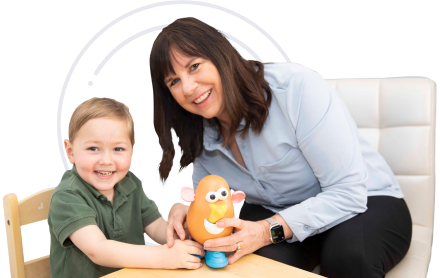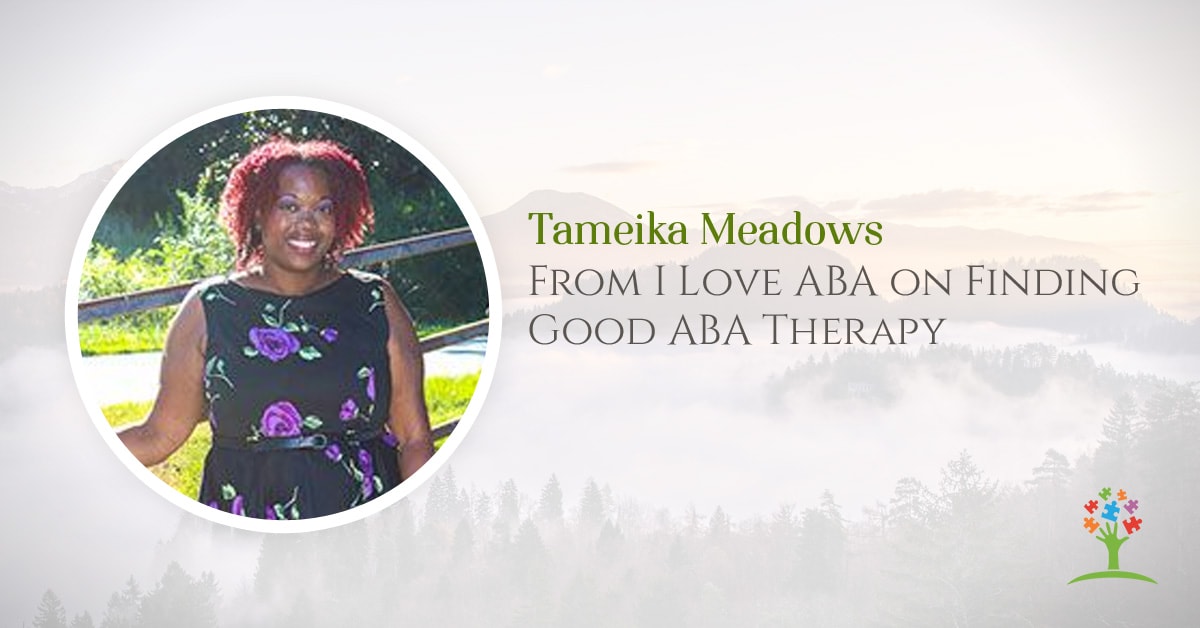Tameika Meadows: Good ABA Therapy
Want to Learn how to Increase Talking & Decrease Tantrums in Children with Autism or Toddlers Showing Signs?
Want to start making a difference for your child or clients?

How can you tell the difference between good ABA therapy and bad ABA therapy? Tameika Meadows, BCBA of I Love ABA, joins me to break down what it is that makes up good ABA and how to know it when you see it.
Tameika shares that the foundational goal of determining an ABA provider is to look at the goal of intervention. What are the goals you are hoping for your child to achieve through therapy? ABA providers need to use language that puts the individual first. For parents, make sure your needs are being heard so that the specific barriers for your child can be met.
COVID aside, a big red flag is when an ABA provider does not allow parents to tour, view, and observe the facility or therapy. Assuming this isn’t the case, the next thing is to be clear on strategy, goals, and reinforcement. There should never be surprise moments if a parent looks in on therapy, every single thing worked on or used in therapy should be discussed and agreed upon between parents and providers. Every part of therapy should have caregiver involvement and caregiver consent.
Whether you’re at home or in a clinic for ABA, parents are the experts on their child. One of the reasons for this podcast, my book, and my courses is to arm parents with the knowledge to understand and encourage good ABA. There really is no one size fits all for your child and your needs, because everyone comes from different household dynamics. So if you’re not working in a center and you’re doing ABA therapy at home, stick with Tameika’s same key points: strategy, goals, and reinforcement.
It can be so hard to find a center or therapist trained in the approach you’re looking for, especially the Turn Autism Around or Verbal Behavior Approach. My suggestion would be to plug those keywords in with VB-MAPP and your local area into Google, and see what you come up with. Tameika stresses to do your research and take the time to find the right provider. It can seem daunting and overwhelming, but you can not get that time and effort back that you spent in a bad facility. I make it really clear in my book, no therapy is better than bad therapy.
Tameika is passionate about educating parents. The best ABA and parent teams are built on informed foundations. You can find out more about Tameika and her plethora of resources on her blog, I Love ABA.

Tameika Meadows on Turn Around Autism
Tameika Meadows, M.Ed., Board-Certified Behavior Analyst, resides in the Atlanta, Georgia area and has nearly two decades of experience providing Applied Behavior Analysis (ABA) treatment to developmentally delayed children and adolescents, across home, school, and clinic treatment settings.
Tameika obtained her graduate degree in School Psychology from Georgia Southern University in 2008, and her career passions include Early Intervention, Functional Communication Training, Clinician Support/Staff Training, and Parent Coaching/Equipping Families.
Tameika is the creator/author of the blog & resource website: www.ILoveABA.com, which is accessed daily by thousands of people all over the world. Through her website Tameika provides simple and practical information, strategies, and tips, about behavior analysis and behavior change.
Tameika currently practices independently providing Telehealth consultation services, BCBA supervision, ABA Training, mentoring services, Family/Caregiver Workshops, and behavioral support services to schools and other organizations. Tameika has also authored multiple Applied Behavior Analysis books and manuals, such as: “101 Ways to do ABA”, an introductory resource guide for parents and therapists; “From A to Z: Teaching Skills to Children with Autism”, a resource guide for educators; “A Manual: Creating an Autism Intervention Program”, a resource guide for practice owners; and “The Practical ABA Practitioner”, an invaluable in-the-field resource for ABA practitioners.
For More Information: https://www.tameikameadowsconsulting.com/
You’ll Learn
- What to look for in an ABA therapist.
- How to find good ABA.
- What does bad ABA look like?
- ABA resources for parents.
- Is ABA bad?
- What to look for in an ABA therapist.
- How to find good ABA.
- ABA resources for parents.
Resources
- MaryBarbera.com/workshop (Sign up for a free workshop online for parents & professionals)
- Autism Detection: A Summary of Dr. Ami Klin’s Autism Work
- ABA Therapy: Four Myths & Truths
- In Home ABA Therapy vs. ABA School: Which is Better?
- Lessons about Turning Autism Around: An Interview with a Mom of 2 Young Boys with Autism – Autism Mom, ABA Help for Professionals and Parents
- Autism in Siblings Risks & Other Diagnoses: Interview with Autism Mom Jenna P.
- Autism Self Care Skills: Potty Training, Sleep, Dressing & More
- Autism and Potty Training | Toilet Training Tips for Kids with Autism
- Dr. Keith Williams: Tackling Selective Eating in Children with Autism – Autism Mom, ABA Help for Professionals and Parents
- Empowering Parents: Parent Led Therapy for Children with Autism
- Home Based ABA for Autism | Interview with Amy M.
- Getting an ABA Program Started – Autism Mom, ABA Help for Professionals and Parents
- I Love ABA!
- Heading off autism diagnoses early
Want to Learn how to Increase Talking & Decrease Tantrums in Children with Autism or Toddlers Showing Signs?
Want to start making a difference for your child or clients?
